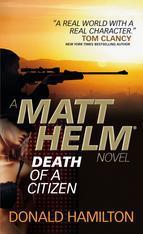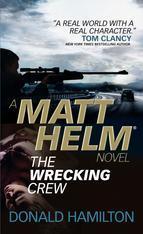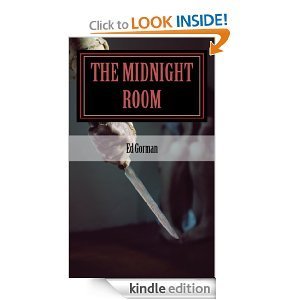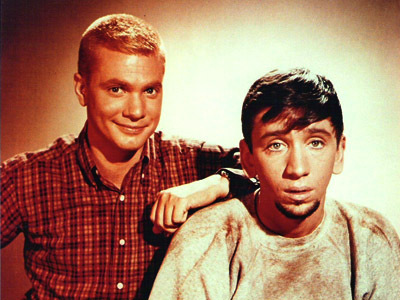Ed Gorman's Blog, page 137
January 30, 2013
Harry Whittington by Jason Starr
Harry Whittington: The King of Pulp Originals
by Jason Starr
from Pulp Originals
 Harry Whittington was one of the most prolific writers in the history of fiction. From 1946 to 1984 he produced over 150 novels. At his peak he was, for twenty years (in the 50s and 60s), writing on average about seven novels a year. In today's era, where novelists, aided by computers, struggle to compete one book a year, Whittington's achievement was truly superhuman, never to be surpassed, the literary equivalent of DiMaggio's 52-game hitting streak.One of the true work-horse writers of the pulp era, Whittington wrote in multiple genres and published additional books under such pseudonyms as Whit Harrison, Ashley Carter, Blaine Stevens, Tabor Evans and Robert Hart Davis. He also wrote screenplays and had a long relationship with Hollywood. While Whittington must have written very quickly to maintain his output, this wasn't a case of quantity over quality. While some of his books were more successful than others and some of his titles began to sound alike--they often contained the words "sin," "murder," and "hell"--he maintained an astounding integrity to his work throughout his career, spinning imaginative plots with crisp dialogue and clearly drawn, unforgettable characters. Maybe his writing wasn't as stylized as Thompson's, Goodis's or Cain's, but his plotting and dialogue was as great, or better.Born in 1915 in Ocala, Florida, Whittington worked in government jobs before he started writing. He sold his first novel, Vengeance Valley, a western, in 1945. In the fifties, he turned his attention primarily to crime fiction, producing books for Fawcett. Crowned "the king of the paperback originals" by Bill Pronzini, he was the major pioneer of the pulp novel of the fifties, forging a path for writers such as Jim Thompson, Gil Brewer, Lionel White, Vin Packer, James McKimmey, John D. MacDonald and Lawrence Block.
Harry Whittington was one of the most prolific writers in the history of fiction. From 1946 to 1984 he produced over 150 novels. At his peak he was, for twenty years (in the 50s and 60s), writing on average about seven novels a year. In today's era, where novelists, aided by computers, struggle to compete one book a year, Whittington's achievement was truly superhuman, never to be surpassed, the literary equivalent of DiMaggio's 52-game hitting streak.One of the true work-horse writers of the pulp era, Whittington wrote in multiple genres and published additional books under such pseudonyms as Whit Harrison, Ashley Carter, Blaine Stevens, Tabor Evans and Robert Hart Davis. He also wrote screenplays and had a long relationship with Hollywood. While Whittington must have written very quickly to maintain his output, this wasn't a case of quantity over quality. While some of his books were more successful than others and some of his titles began to sound alike--they often contained the words "sin," "murder," and "hell"--he maintained an astounding integrity to his work throughout his career, spinning imaginative plots with crisp dialogue and clearly drawn, unforgettable characters. Maybe his writing wasn't as stylized as Thompson's, Goodis's or Cain's, but his plotting and dialogue was as great, or better.Born in 1915 in Ocala, Florida, Whittington worked in government jobs before he started writing. He sold his first novel, Vengeance Valley, a western, in 1945. In the fifties, he turned his attention primarily to crime fiction, producing books for Fawcett. Crowned "the king of the paperback originals" by Bill Pronzini, he was the major pioneer of the pulp novel of the fifties, forging a path for writers such as Jim Thompson, Gil Brewer, Lionel White, Vin Packer, James McKimmey, John D. MacDonald and Lawrence Block. Sadly, only seven of Whittington's novels are in print today, and several of these are as parts of expensive anthologies. Compared to other pulp writers from his era, Whittington's doing well. The overwhelming majority of novels written during "the golden age of the crime novel" are out of print and all but forgotten. While everyone has heard of Cain, Thompson, Goodis, and Willeford, many devoted fans of pulp fiction know nothing about the other great crime writers of the fifties and sixties. Of course not all of these out-of-print books are forgotten classics--some were written quickly for fast paychecks and read that way--but there are hundreds of thrilling crime novels by great authors that have been undeservedly ignored.
Sadly, only seven of Whittington's novels are in print today, and several of these are as parts of expensive anthologies. Compared to other pulp writers from his era, Whittington's doing well. The overwhelming majority of novels written during "the golden age of the crime novel" are out of print and all but forgotten. While everyone has heard of Cain, Thompson, Goodis, and Willeford, many devoted fans of pulp fiction know nothing about the other great crime writers of the fifties and sixties. Of course not all of these out-of-print books are forgotten classics--some were written quickly for fast paychecks and read that way--but there are hundreds of thrilling crime novels by great authors that have been undeservedly ignored.for the rest go here: http://pulporiginals.com/Contents-pul...
Published on January 30, 2013 14:33
January 29, 2013
NONE BETTER-THE MATT HELM NOVELS FROM TITAN

Matt Helm meets Tina, an old World War II associate, who coerces him into helping her with her plans. Thinking she is still one of the good guys, he goes along. After finding out she isn't, he tries to forgive and forget. She kidnaps his daughter to force him to help her. He sets out to find his missing daughter with disastrous results for the WWII associate.

After a brief refresher course, Helm is sent to Sweden with the task of killing "Caselius," a pesky foreign agent. Using his experience as a photographer as his cover story, Matt Helm manages to identify "Caselius," track him to his lair, and permanently remove him from among the living.
Ed here:
"Donald Hamilton is one of the three best American thriller writers, the other two being Dashiell Hammett and Ross Thomas." John Fraser
I have to admit that I was never a big fan of Ian Fleming's. The Bond stuff was moderately amusing but I just never took to it. The late great Anthony Boucher said it best for me: "Donald Hamilton has brought to the spy novel the authentic hard realism of Dashiell Hammett; and his stories are as compelling, and probably as close to the sordid truth of espionage, as any now being told."
Historians have borne out just how realistic the Helm novels were. The Cold War was just as seamy, psychopathic and deadly as Hamilton insisted it was. One more plus is the style. This man could write the English language the way God intended--wry, brutal, dazzling.
I promise you--buy these first two Helms and you'll buy all the rest. He was a true master.
Published on January 29, 2013 13:13
January 28, 2013
The Ten Best 30 Rock Episodes Ever
Yesterday at 9:15 PM 42CommentsThe Ten Best 30 Rock Episodes EverBy Matt Zoller Seitz FROM NEWYORK MAGAZINE Ed here:My favorite show since Arrested Development went off the air.This week Matt Zoller Seitz pre-eulogized 30 Rock as the NBC comedy’s Jan. 31 finale sadly approaches. “30 Rock has evolved from an inside-showbiz farce with sporadic fourth-wall-breaking sight gags and meta dialogue to a weekly cyclone of surreal tomfoolery,” he writes. And yet, as a compulsively outlandish parody of the business of television and sitcoms themselves, “there’s no earthly reason why we should feel for any of its characters; and yet we do, because the very tropes that 30 Rock loves to mock are embedded in our TV-watching subconscious. The show says, ‘Look at how shamelessly television pushes your buttons!’ while hammering on those very same buttons.” To further celebrate its passing, Seitz picked his ten favorite episodes of the show’s run. 10. “100” Season 5, Episodes 20 and 21
Jack’s boss announces that he’s canceling The Girlie Show. The greatest self-aware, self-congratulatory flashback party this side of a classic Simpsons episode.
 "Succession"9. “Succession”
"Succession"9. “Succession”Season 2, Episode 13
Jack is passed over for promotion to CEO, and Tracy decides to produce the world’s first pornographic video game. A mix of ongoing plotlines with a one-off weekly clownfest.8. “Dance Like Nobody’s Watching”
Season 6, Episode 1
Jenna judges America’s Kidz Got Singing; Tracy is convinced Liz is a “crack whore”; Kenneth prepares for the Rapture. A great example of the show’s kookiness and warmth.7. “Dealbreakers Talk Show #0001”
Season 4, Episode 7
Frank replaces Liz as head writer of TGS; Tracy becomes obsessed with winning an Emmy, Grammy, Oscar, and Tony. The show’s matter-of-fact lunacy really shines here.6. “Gavin Volure”
Season 3, Episode 4
Liz spends a weekend with the title character, a fraud and arsonist (Steve Martin). Martin’s discomfiting performance is one of the show’s richest star cameos.5. “Ludachristmas”
Season 2, Episode 9
The titular holiday climaxes with the staff tearing down the Rockefeller Center Christmas tree. A classic bizarro episode that builds and crests like a wave.
 "Live From Studio 6H"4. “Live From Studio 6H”
"Live From Studio 6H"4. “Live From Studio 6H”Season 6, Episode 19
The better of 30 Rock’s two live episodes; includes clever allusions to Laugh-In,Amos & Andy, and The Honeymooners.3. “When It Rains, It Pours”
Season 5, Episode 2
Jack is obsessed with mortality and records a video for his unborn son; Tracy races to the hospital for his daughter’s birth. A great mix of goofiness and sentiment.2. “My Whole Life Is Thunder” Season 7, Episode 8
Jenna plots revenge on Liz for upstaging her own nuptials by getting married; Jack delivers a eulogy for his mother so stirring it’d make Mark Antony weep.
 "Tracy Does Conan"1. “Tracy Does Conan”
"Tracy Does Conan"1. “Tracy Does Conan”Season 1, Episode 7
Prescription pills make Tracy hallucinate on the day of an appearance on Late Night. A brilliantly structured episode with a classic 30 Rock race-to-the-finish.*This article originally appeared in the February 4, 2013 issue of New York Magazine.RELATED
Published on January 28, 2013 06:53
January 27, 2013
THE MIDNIGHT ROOM

$3.99
A blackmailer is playing with fire when he makes a terrifying serial killer his target.A SPINETINGLER NOMINEE FOR BEST SUSPENSE NOVEL OF THE YEAR“The Midnight Room is lean, mean, and entertaining…and brutal and unforgiving of its characters, particularly of its three primary protagonists, police officers Kim Pierce and Michael and Steve Scanlon.” --Pulp Serenade“The Midnight Room is a terrific lean and hard crime thriller. Its roots are deep in the hardboiled and noir genres, but it is nothing less than original. The characters and its dark vision of an unfair world raise it well beyond the expected, and in the end it’s the very bitter dark that offers redemption for both the characters and the reader.” –---Gravetapping
"Gorman's written a super-solid crime drama that’s less about a string of murders and more about the ties that bind those investigating, familial and otherwise. And it’s thoroughly engrossing, starting with the opening chapter, in which the mother of a girl who’s been missing receives a mysterious package she didn’t order. Inside? Her daughter’s skull.
Me, hooked." --Bookgasm
Published on January 27, 2013 11:36
January 26, 2013
The Holmes Behind the Modern Sherlock

The Holmes Behind the Modern Sherlock
By MIKE HALE from the New York Times
We’re lousy with Sherlock Holmeses right now: the Robert Downey Jr. version on the big screen, the competing television interpretations of Benedict Cumberbatch (“Sherlock”) and Jonny Lee Miller (“Elementary”) and all the Holmes-inspired geniuses in current and recent TV shows like “The Mentalist,” “Psych,” “House” and “Monk.” So “The Seven-Per-Cent Solution,” released this week in a new Blu-ray and DVD package, enters a crowded market.But its Sherlock deserves special consideration because he’s the father of all those modern Holmeses. Besides being a clever comic mystery with an absurdly talented cast, this 1976 film — based on Nicholas Meyer’s playful novel imagining the meeting of two great Victorian detectives, one of whom is Sigmund Freud — established the template for all the twitchy, paranoid, vulnerable, strung-out Holmeses to come.It may be hard to countenance now, but for much of the 20th century there was just one Sherlock Holmes on screen: the hawk-nosed British actor Basil Rathbone, whose Shakespearean elocution and commanding physical presence defined the English-speaking world’smost famous detective in 14 movies in the 1930s and ’40s.The Rathbone Holmes, familiar to generations of late-night TV viewers, could be energetic and impetuous, but he was decidedly rational, and his behavior was always in bounds — there was not much evidence of the Bohemianism and eccentricity the character exhibited in Arthur Conan Doyle’s original stories. Humor in the films was supplied by Nigel Bruce’s clueless Doctor Watson, a lovable buffoon who was always bewildered by the case at hand.In his novel and his screenplay, Mr. Meyer reacted against the Rathbone films’ ossified notions of Holmes and Watson, giving the story a postmodern spin while in some ways returning the characters to their Conan Doyle roots. “ ‘The Seven-Per-Cent Solution’ is not a Sherlock Holmes movie,” he says in an interview included with the new release (Shout! Factory, two discs, $26.99). “It’s a movie about Sherlock Holmes. That’s different.”
for the rest go here: http://www.nytimes.com/2013/01/26/mov...
Published on January 26, 2013 08:28
January 25, 2013
Hardboiled America
His assessment of such major writers as Hammett, Chandler, Woolrich, Gardner are very much his own, and all the more fascinating because of it. He also takes the time to illustrate how literary fiction influenced hardboiled and how hardboiled influenced literary and mainstream.
For me he's at his best with the second generation of hardboiled writers, namely the Gold Medal girls and boys and how they spun off into Lion, Graphic, Ace, etc. I wish he wasn't so dismissive of John D. MacDonald. Here he takes the familiar path of the neo-noir critics who complain that JDM wasn't tough enough in his viewpoint. Most of his books concern middle class or working class men and women confronting crime. They're not gumshoes, they're not criminals. They bring their manners and mores with them when they try to extricate themselves from their problems. It's not that he isn't hardboiled; it's that he doesn't use all the cliches of hardboiled.
O'Brien shines when discussing Day Keene, Harry Whittington and, especially, Charles Williams. In fact I think his piece on Williams is definitve. Hard to imagine anybody handling Williams' career any more shrewedly.
The Hardboiled Checklist at the back of the book (1929-1960) is the most intelligent, exhaustive such list I've ever seen. Makes you wish you had three lifetimes just to read every book he takes note of.
This belongs on the shelf of every hardboiled reader and writer. It doesn't get any better than this.posted by Ed Gorman @
Published on January 25, 2013 13:43
January 24, 2013
You Rang? The Dobie Gillis Show
You Rang?Published Thursday, January 24, 2013 at 11:34 AM
 Ed here: I'm a stone Dobie Gillis fan. Thanks to a friend of mine I have a few dozen VHS episodes of them. Max Shulman was a fine writer and his Dobie book translated perfectly to the small screen. I'm buying the Shout Factory Set of course.
Ed here: I'm a stone Dobie Gillis fan. Thanks to a friend of mine I have a few dozen VHS episodes of them. Max Shulman was a fine writer and his Dobie book translated perfectly to the small screen. I'm buying the Shout Factory Set of course.The great Mark Evanier blogged this today. His site News From me is a daily must-read http://www.newsfromme.com/
Hey, since we’re talking about old TV shows being released on DVD, I oughta mention that Shout Factory has just announced they’ll be bringing us The Many Loves of Dobie Gillis in a complete set later this year — and they seem to have all 147 episodes.I was a big fan of this series when it first aired from 1959 to 1963 — or at least, I was of its first few seasons. I seem to recall it taking a horrible turn for the worse near the end of its run…but recently, I’ve been TiVoing and watching Season One on MeTV and they hold up pretty well. A lot of the attention the show gets these days is because of the stellar array of supporting cast members who later became more prominent, including Warren Beatty, Tuesday Weld and Sally Kellerman…but the regular cast was quite wonderful. The show had crisp, fast-paced dialogue and a wonderful style about it.As explained here in my Bob Denver obit, I happened to be on the premises for the first of the two attempts to later revive the series. It was a train wreck of epic proportions and I felt quite sorry for Dwayne Hickman, Frank Faylen, Sheila James and Mr. Denver. They were rightfully proud of the original program and insulted that one man thought every single thing about the show had to be changed for it to have a shot at reaching a modern audience. That might have been true had the series not been so far ahead of its time.Anyway, I’m looking forward to this set. I hear Shout Factory is planning a good array of special features, including interviews with surviving cast members. It’s too bad they didn’t do this last year when Steve Franken, who was so perfect in the role of Chatsworth Osborne Jr, was still with us and could have participated.
Published on January 24, 2013 14:04
Margaret Atwood Says It’s OK to Read Whatever You Want
Margaret Atwood Says It’s OK to Read Whatever You Want
 submit17
submit17
 FROM BOOK RIOTI recently had the pleasure of reading Margaret Atwood’s bookIn Other Worlds. An essay collection that examines science fiction and her relationship with it, In Other Worlds is essentially a memoir of Atwood’s reading life. It’s a look at the books that shaped one of the most respected and beloved contemporary writers, and it’s a case for reading widely and without pretension.Here are four favorite quotes–really, the whole book is terrific and you should read it–to remind you that yes, Veronica, it really is OK to read whatever the hell you want. For this recovering book snob, it was a timely reminder and a kick in the pass. After all, itf it’s good enough for Margaret Atwood, it’s good enough for me.
FROM BOOK RIOTI recently had the pleasure of reading Margaret Atwood’s bookIn Other Worlds. An essay collection that examines science fiction and her relationship with it, In Other Worlds is essentially a memoir of Atwood’s reading life. It’s a look at the books that shaped one of the most respected and beloved contemporary writers, and it’s a case for reading widely and without pretension.Here are four favorite quotes–really, the whole book is terrific and you should read it–to remind you that yes, Veronica, it really is OK to read whatever the hell you want. For this recovering book snob, it was a timely reminder and a kick in the pass. After all, itf it’s good enough for Margaret Atwood, it’s good enough for me.On reading Ray Bradbury when she was supposed to be doing homework:“I was, in fact, leading a double life, or even a triple one: the terms highbrow, middle brow, and lowbrow were much in use at that time–the metaphor was based on some idea of Neanderthals having receding foreheads–but I seemed to have a taste for all three kinds of brow, which I can’t say ever disturbed me.”
On taking a course from an academic she greatly admired:“He had the added benefit of being a reader at all three brow levels, which pleased me a lot; it’s always encouraging to be told that it is intellectually acceptable to read the sorts of things that you like to read anyway.” (emphasis mine)
On the joy of stumbling upon never-before-heard-of books in the library when you should be doing Very Serious Research:“In those stacks there were more obscure books than you could ever hope to find elsewhere, even on the Internet today, and I whiled away many a misspent hour reading about things that were none of my business.”
On the perks of growing up in a snobbery-free environment:“Nor did I make any distinctions between great literature and any other kind. I just liked reading.”
Published on January 24, 2013 10:12
January 23, 2013
Edmond O'Brien
FRIDAY, JANUARY 25, 2008
"I'd like to report a murder."
"Whose?"
"Mine."
Hw can you miss with an opening like that? This is pure noir from first frame to last, an almost surreal experience of radioactive drugs (the scene with the doctor telling him that he's going to die is handled flawlessly), the almost documentary-like observation of San Francisco architecture, the quick vicious violence.
There's even a snarky bit of satire. The war has ended and prosperity has come to many. Salesmen abound. They fill the hotel where O'Brien first stays. As he goes into his room he sees there's a party going on in the room across from him. He accepts the invitation. Director Rudolph Mate gets everything right in this bit--the inane chatter, the sexual undertone, the sudden drunken jealousy, the goofy hats of the women and the effusive Chamber of Commerce attitude of the men.
From that point on it's grim without relief. As many critics have noted the black band in the jazz club scene was pushing the envelope. There was studio concern the film wouldn't be shown in the South (though I never quite understood that--the band did nothing but make some sweet music, they weren't hitting on white chicks). And then comes the succession of liars O'Brien encounters as he tries to figure out who poisoned him and why. He becomes a de facto hardboiled private eye and a better peeper than most. There's all that anger, all that fear.
I saw this new at Half Price for (I think) $3. Hard to go wrong.
As for O'Brien...several years ago TCM showed him as a very young man in a costume drama. He was thin and theatrcal. Studied. Weight and years gave him a more comfortable persona, the perpetually agigated average man who lost just about every battle with the dark gods. Though he would do more work after his part in The Wild Bunch, I think he was especially memorable as the crazed-wise old coot with rotted teeth and a wino laugh. Fitting and ironic in context that his character and Robert Ryan's were the only two left in the coda. Fine work capping a significant career.
Published on January 23, 2013 14:53
January 22, 2013
A short version of Norman Mailer's Enemies List
TUESDAY, JANUARY 09, 2007
W henever Norman Mailer puts out a new book—his latest, The Castle in the Forest, about Hitler, comes out next week—eager profilists find it compulsory to mention that the famous pugilist has “mellowed.” It’s hard to dispute, given his two canes and near blindness, but if the reviews for Castle are bad (and the buzz ain’t good), don’t be surprised if the old lion roars yet again. After all, it was only last month in Esquire that he took on one longtime foe, Times critic Michiko Kakutani, saying, “What put the hair up her immortal Japanese ass is beyond me.” Below, a necessarily much-abbreviated dossier, Mailer’s All-Time Enemies List.
(Photo: Bernard Gofryd/Getty Images)
William Styron
Crime: Allegedly bad-mouthing Mailer’s wife Adele.
Action taken: Wrote a critical piece in Esquire and a letter to Styron in 1958 that said, “I will invite you to a fight in which I expect to stomp out of you a fat amount of your yellow and treacherous shit.”
Blowback: Styron sniped at him in print for 25 years, and one of his villainous characters bore a certain resemblance to Mailer. They finally reconciled in 1985.
(Photo: Fred R. Congrad/New York Times Co./Getty Images)
Truman Capote
Crime: Saying of Mailer, “He has no talent. None, none, none!”
Action taken: Mailer sat on him.
Blowback: In 1980, Capote told an interviewer that while Mailer called In Cold Blood a “failure of the imagination … now I see that the only prizes Norman wins are for that very same kind of writing. I’m glad I was of some small service to him.”
Adele Morales Mailer
Crime: Calling her husband a “faggot” when he was drunk and stoned at 4 a.m. at the tail end of a party to launch his mayoral campaign.
Action taken: Stabbed her twice with a penknife, nearly killing her.
Blowback: Though she refused to testify against him, he did spend seventeen days in Bellevue’s psych ward. They finally divorced two years later. She wrote a book about it in 1997.
McGeorge Bundy
Crime: Being Lyndon Johnson’s national-security adviser during the Vietnam War.
Action taken: At Capote’s Black and White Ball in 1966, he invited the official to step outside to settle their foreign-policy differences in a street fight.
Blowback: Not much, after Norman Podhoretz and Lillian Hellman calmed them down.
Peter Manso
Crime: Writing a biography of Mailer in 1985 that, despite being authorized, was not to Mailer’s liking.
Action taken: Cut off relations when the bio was published and thereafter referred to him as a confirmed enemy.
Blowback: In a 2002 book about Provincetown, Manso wrote—among many unflattering things—that Mailer had a doctor’s wife procure psychedelic drugs for him. Mailer fired off a letter to a local paper asserting that “P. D. Manso is looking for gold in the desert of his arid inner life, where lies and distortion are the only cactus juice to keep him going.”
Germaine Greer, Kate Millett, et al.
Crime: Being feminists—and in the case of Millett, coining the phrase “male chauvinist pig” to describe him.
Action taken: Attacked them all in a retrograde essay titled “The Prisoner of Sex” and in a vicious debate at Town Hall with Greer and other women, immortalized in the 1971 D. A. Pennebaker documentary Town Bloody Hall.
Blowback: At Town Hall, Mailer was practically booed off the stage (with help from audience members Betty Friedan and Susan Sontag). Greer denounced the “masculine artist in our society” as a “killer,” but only after saying she wanted to sleep with Mailer. The two went for drinks afterward, but nothing reportedly came of it.
(Photo: Bernard Gotfryd/Getty Images)
Gore Vidal
Crime: Comparing “The Prisoner of Sex” to “three days of menstrual flow” and Mailer to Charles Manson.
Action taken: Head-butting him in the green room of The Dick Cavett Show in 1971, then telling him, on-air, that he ruined Kerouac by sleeping with him. Six years later, he threw a drink at Vidal—and punched him—at a Lally Weymouth soirée.
Blowback: Still on the floor, Vidal said, “Words fail Norman Mailer yet again.” Days later, Vidal went on Cavett’s show to assert that Mailer had—literally—stabbed his second wife in the back. They, too, reconciled in 1985.
Michiko Kakutani
Crime: Reviewing his books negatively.
Action taken: In 2005, he told Rolling Stone, “Kakutani is a one-woman kamikaze. She disdains white male authors, and I’m her number-one favorite target … But the Times editors can’t fire her. They’re terrified of her. With discrimination rules and such, well, she’s a threefer … Asiatic, feminist, and ah, what’s the third? Well … let’s just call her a twofer … She is a token. And deep down, she probably knows it.”
Blowback: Stay tuned. Someone at the Times has to review The Castle in the Forest, and we can be reasonably certain critics won’t like it. Kakutani hasn’t recused herself, and the takedown is her stock-in-trade.
Published on January 22, 2013 12:34
Ed Gorman's Blog
- Ed Gorman's profile
- 118 followers
Ed Gorman isn't a Goodreads Author
(yet),
but they
do have a blog,
so here are some recent posts imported from
their feed.



